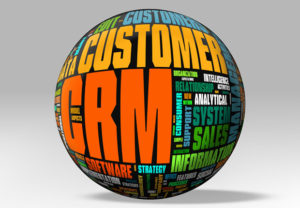
Sales people love leads. They want lots of them, and they want them now. The more leads, the more money — because sales is a numbers game, right?
Well, yes and no. Some believe in an equation that says X number of leads will produce Y number of closed deals. If you make X greater, Y will be greater, too, right?
That’s a quaint thought, but it’s not the way it works. Sales does involve numbers — specifically, revenue numbers. To increase those numbers, sales people must focus on productivity. Burying sales people under a load of leads doesn’t help with that. What does help? Lead quality.
Create Your Own ‘Lead’ Definition
Seeing sales as a linear equation can be hazardous, as CRM consultant Richard Boardman articulated beautifully in “The Golden Sales Sausage Machine.”
If my staff has four appointments a week and we force them to take eight, then sales will double! The problem here is that time itself is not part of the equation — it remains constant. Now your sales team is spread thin over the same amount of time, and so they can’t devote as much time to each customer.
Add to that the fact that to get more leads in front of sales, marketing now is passing on colder leads, and you have sales spending more time with customers who are less likely to buy.
Even if you explain this to sales, they’re still going to demand more leads — and what they’re really demanding is more qualified leads. However, in many organizations, sales and marketing have never discussed what a “qualified lead” actually means.
So, the first step in beating the numbers game is to have a lead definition summit between sales and marketing. Get in a room and hash it out: When sales says “lead,” what does that mean? What’s a sales qualified lead? There are definitions out there, but they’re not useful to you: Qualified leads for your business will have qualities all their own, and your sales department needs to articulate them.
Marketing will have to help facilitate these discussions, because sales often starts out echoing Supreme Court Justice Potter Stewart’s opinion in Jacobellis v. Ohio: “I shall not today attempt further to define [it]… but I know it when I see it!”
That may be so, but it’s not enough for marketing to go on. Instead, both sides will have to hash out the specifics of what a qualified lead looks like.
Align Sales and Marketing Goals
Next, marketing needs to build a lead-scoring system that equates with the definitions sales describes. Again, sales needs to be involved — while lead-scoring is great for assessing where potential customers are on their buying journeys, and for surfacing hot leads that have gone unnoticed, they must reflect reality.
For example, if first contact comes at a point when a customer’s clearly ready to buy — a frequent occurrence in the Sales 2.0 era — that fact must be identified and that lead must jump the turnstiles and become qualified immediately, even if the customer’s score is still somewhat low because of lack of prior activity with your business.
Sales management also has to make sure that leads are being given to the right sales people at the right pace to ensure they have enough time to work them properly. This is where lead management and territory and quota software is valuable.
It helps distribute responsibility for leads evenly, taking into account sales skills and the potential value of each territory while helping sales people prioritize leads and work them in the sequence that’s likely to prove most rewarding.
As I’ve written before, marketing’s goals have to be aligned with the goals for sales. If marketing is judged on how many leads it generates, its campaigns will focus on bringing in as many leads as possible. If it’s judged on how many of the leads it passed to sales were closed, the emphasis swings away from sheer numbers and toward lead quality.
This sounds simple — but the last variable in this equation is a human one. The personalities of the sales and marketing leaders must be such that they can accept that there’s a lot to learn from the other side.
From there, marketers and sales people have to acknowledge that both sides make real contributions and to commit to working together. That’s not guaranteed, since we’ve had years of sales and marketing blaming each other for poor performances.
However, if the people in your organization can accept that selling is a team sport, and if they can communicate on a basic understanding of what leads are and then use the right technology to manage them, there can be a renaissance in your sales and marketing organizations that will lead directly to improved revenue — and that always generates greater satisfaction among sales and marketing professionals.





















































